This week, Frank gets down with the gnomes…
As I wander about the world, or my small part of it, one thing I find peculiarly distressing is the number of persons of frantic mien who rush up to me and clutch at my lapels, beseeching me.
“Mr Key, Mr Key!” they plead, in cracked voices, “Please tell me how to see gnomes! I want to be able to see gnomes!”
What all these poor souls have in common is a tragic awareness that gnomes exist coupled with an inability to perceive them. I speak of course of real gnomes which, though they bear a striking resemblance to the jolly garden gnome beloved of suburbia, with his pointy hat and pot belly and, occasionally, his angling equipment, are by no means made of stoneware or plastic, and cannot be bought in a garden centre. Real gnomes caper in the woods, going about their gnomey business, but are very difficult to see. Yet judging by the number of people who buttonhole me in the street, there is clearly a great desire among our citizens to “get down with the gnomes”, much as politicians like to “get down with the kids”.
It has never been entirely clear to me why I should be thought to have some kind of inner track to the world of gnomes. I can only surmise that my reputation as a repository of the sum of human, and inhuman, knowledge must be spreading far and wide, and this must be a good thing. Lord knows, I try my best, here at The Dabbler and on my own website and on my weekly radio programme, to expound the wisdom of the ages. Despite the often dishevelled and wild-eyed state of my street importuners, it is good to know that my efforts are not entirely in vain.
So what I usually do when assailed by one of these social inadequates is to take them aside and, after checking that they have sufficient cash to pay for a couple of cups of tea, lead them to a cafeteria, where we sit together at a formica-topped table. They usually calm down a bit after a couple of slurps of tea, though I often have to explain that I have not brought them to gnomeland as such, and they are unlikely to be able to see any gnomes just yet. This can crush the spirits of the more emotionally frail beseechers, who seem to think I can just snap my fingers and make gnomes appear before their eyes. It takes patience, and empathy, and as many additional cups of tea for me as they can afford, to explain things to them.
Eventually, still in the cafeteria, and possibly stuffed with pastry treats too, depending on the financial resources of the shabby indigent opposite me, I remove from my pocket a scrunched-up scrap of paper on which I have copied out some very wise words. I unscrunch the scrap, and read as follows:
“This, chum, is an extract from Theosophy : An Introduction To The Supersensible Knowledge Of The World And The Destination Of Man by Rudolf Steiner [above], published in 1910. He says:
The spiritual outlook, in fact, is through [the Spirit of the Age (the Zeitgeist)], extended over a variety of other beings, both lower and higher, who live in the environment of man without his being able to perceive them with his bodily senses. But those who have powers of spiritual sight perceive such beings and can describe them. To the lower kinds belong those designated by the spiritual investigator, as salamanders, sylphs, undines, and gnomes. It is quite to be understood that anyone who is inclined to admit the validity of physical vision only, regards such beings as the offspring of a wild hallucination and superstition. They can of course never become visible to the physical eye for they have no physical bodies. The superstition does not consist in regarding such beings as real, but in believing that they appear in a way perceptible to the physical senses. Beings with such forms cooperate in the building of the world, and one comes into connection with them as soon as one enters the higher regions closed to the bodily senses.”
Then I scrunch up the scrap of paper, shove it back into my pocket, and, after getting the pitiful wretch to hand over any remaining cash they have about their person, dismiss them from my presence. My presence being, of course, a shining aura illuminating the gutter. He was a very clever man, that Rudolf Steiner.

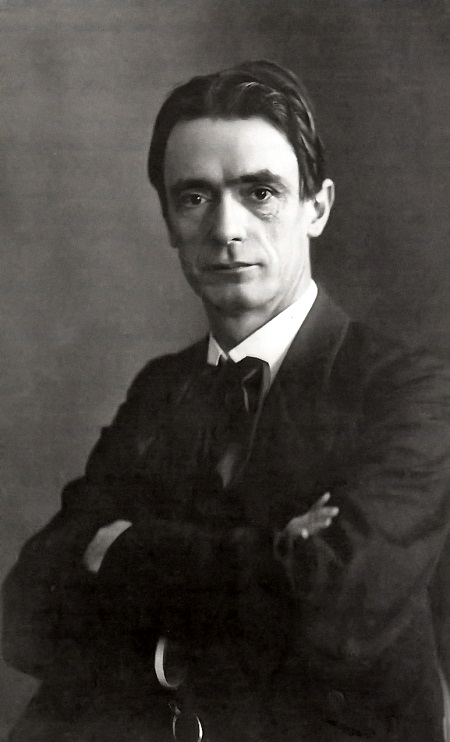
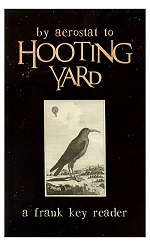
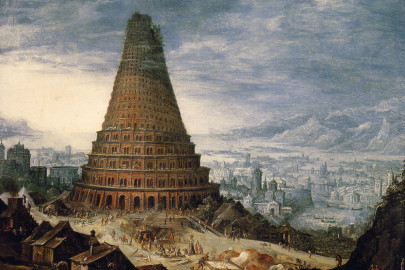
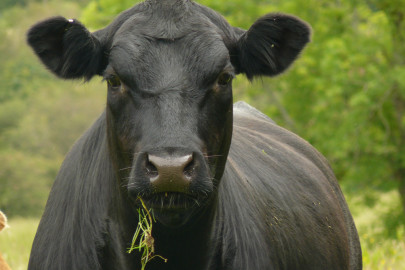
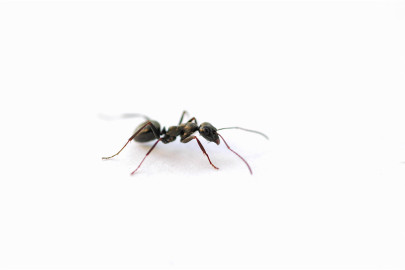







From the Daily Mail, only last month:
A university lecturer is claiming to have photographed fairies flying through the air in the British countryside. John Hyatt, 53, says his series of photos which were taken over the past two years prove the tiny winged creatures do exist in the Rossendale Valley, Lancashire.
Mr Hyatt, Director of Manchester Institute for Research and Innovation in Art and Design (MIRIAD) at Manchester Metropolitan University insists his photos are genuine and have not been altered in any way. And he has now put his photographs on display at a special exhibition.
Mr Hyatt, who was a member of the Three Johns punk band in the 1980s and 1990s, says adults that have seen his photos have started to harbour ideas that they may indeed be real. He said: ‘It was a bit of a shock when I blew them up, I did a double take … I went out afterwards and took pictures of flies and gnats and they just don’t look the same …’
Mr Hyatt, who lives Rawtenstall, has posted some of his images on social media and says they have attracted much debate … ‘I don’t believe they are just smaller versions of us and go home and have a cup of tea at the end of the day. And one is suggesting they have any special powers. From my experience they were just enjoying themselves and there was a little dance in the sunlight going on …’
In 2009, Phyllis Bacon, 55, believed she took a photo of a fairy at the bottom of her garden in New Addington, near Croydon in South London.
You can see some of Mr Hyatt’s fairy photos here.
Tolkien was initially going to call his immortal, tall, fair beings gnomes rather than elves. Would his oeuvre have survived without the change?
I myself have no firm belief in either fairies or gnomes but it has to be accepted that many far, far greater men have taken a different view. Air Chief Marshall Sir Hugh Dowding, for example, had a strong faith in both, insisting that “the most improbable thing about fairies and gnomes is that they are so exactly like our conceptions.” Although they may appear as mere “formless little blobs of light when they are about their work of tending or nourishing the plants,” it should not be forgotten that fairies and gnomes “have little minds and the power of clothing their thought forms in etheric material”.
Dowding was himself an inveterate fairy hunter but seems to have met with little success. In his book The Dark Star (1951) he records a visit to the west coast of Ireland, where he stayed near a certain volcanic mountain said to be the entrance to the kingdom of the gnomes. A local woman, Mrs Randall, told Dowding that she had often seen “the gnomes tumbling on the mountain-sides” and he saw no reason to doubt her word (“it was generally, but quite unjustifiably, accepted that she was a little ‘cracked’” he writes). To learn more, Dowding took part in a séance and was richly rewarded when the ghost of a local landowner expounded at length on the gnomes and their tricky ways:
“Whenever you have volcanic centres of this kind you have direct touch with the beings within the Earth belonging to the gnome kingdom. That is why Mrs. Randall saw them on the Mountain …The gnomes are similar to fairies, but they have more developed mental bodies – in many cases more developed than some of the human beings, and this has been a great and troublesome subject, because they were enormously amused at finding that they could in many cases ‘possess’ human beings and make them do exactly what they wanted … Nothing is more completely comic than to see, as I have seen, one of these rather undeveloped humans, perhaps slightly drunk, under the complete control of the most ridiculous rollicking gnome. It is funnier than I can possibly describe.”
The same spirit had some valuable thoughts on how the controlling activities of the gnomes may have influenced Irish history and culture:
“I think it is owing to this gnome influence that you have so many demented and simple-minded people. Of course this is a very difficult thing to deal with, and extremely bad for the race; it is a type of perversion. Two entirely different lines of evolution meet, and one controls or possesses the other. It is like sex perversion on another plane. So far we have no solution to this wastage of human energy. Perhaps your R.A.F. boys, Hugh, will provide one …
“The gnomes come pouring out of the Mountain: they are not in the least evil in their way – just reckless, thoughtless little people – and the amount of trouble they cause throughout Ireland is beyond belief. The gnomes have got into the blood of this race, and their inconsistencies are everywhere. From another point of view the humans sometimes help the gnomes, but usually it is a case of the gnomes hampering the humans.
“These other lines of evolution are very interesting, and sometimes beautiful; but not in the case of gnomes; they do not belong to the human race, and should never be allowed to influence them to anything but laughter. And when they do this – when the human being laughs at the gnome and ceases to take him or her seriously – the spell’s broken and, through laughter, humanity gains its release. This country is a battlefield between gnomes, fairies and man.”
Although Dowding climbed to the top of the mountain hoping to catch a glimpse of rollicking, tumbling gnomes, a thick cloud came down and he would once again be disappointed.